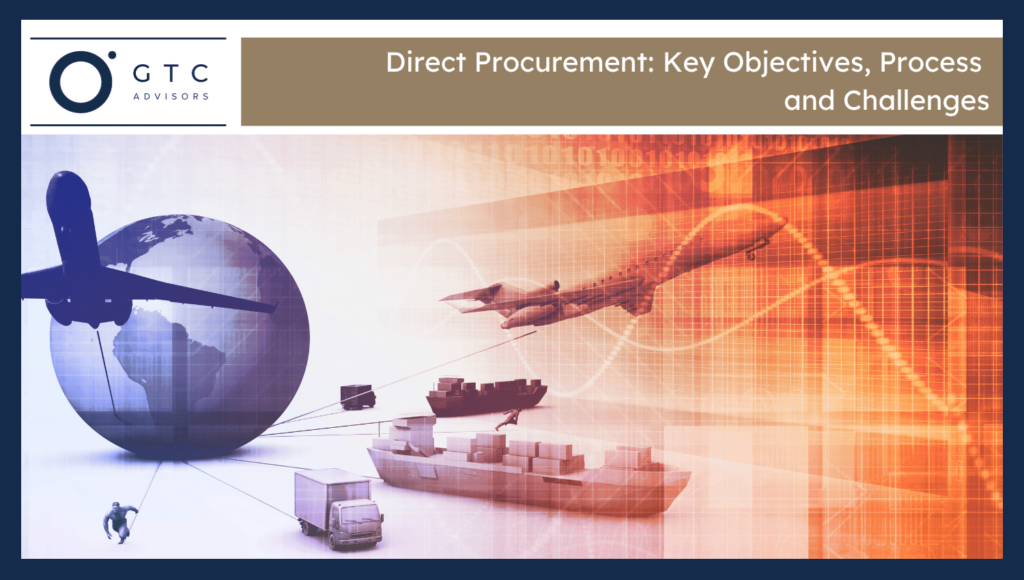Direct procurement refers to a process of buying goods and services that directly affect production or service delivery. It contains raw materials, components and essential items required for the core business operations. The purchases affect the cost, quality and delivery schedules. A dependable procurement process maintains operations smooth and effective. Any delays and mistakes add up to risk in the final product. This is why direct procurement is still closely connected with supplier performance and inventory management. It assists in strategic planning and customer satisfaction. The knowledge of its objectives, process, and issues can assist businesses in achieving better results and minimising the waste levels in supply chains.
What are the Key Objectives of Direct Procurement?
Here are the five key objectives that guide effective direct procurement strategies:
Reliable Supply
A dependable supply guarantees the availability of needed items at the point of production. It facilitates a hassle-free process and prevents delays. This is maintained by good relationships with suppliers and by predicting future demand for a product. Availability is essential in meeting deadlines and customer desires or demands.
Cost Efficiency
Cost efficiency refers to the ability to obtain materials at an affordable price. It deals with finding good terms and minimising waste. Strategic sourcing and bulk procurement enable you to save money. The cost of procurement is low, which sustains the profit margin without compromising the quality or speedy delivery.
Supplier Performance
The supplier’s performance directly affects the timelines and quality. It includes timely delivery, responsiveness and compliance. Outcomes are better with frequent checks and communication. The choice of reliable suppliers ensures enhanced coordination and reduced supply chain disturbances.
Quality Assurance
Quality assurance ensures the consistency of the product. It makes sure that the raw materials satisfy specifications. Prevention of defects can be achieved through inspections, testing and clear specifications. Quality assurance early provides rework reduction, cost reduction, and reputation maintenance for the brand.
Production Continuity
A constant supply of material is essential for production continuity. Supply disturbance causes an interruption in the manufacturing process and a delay in delivery. Risks are minimised by proper planning, quality vendors, and controlled inventory. A sustainable procurement model maintains its operations in line with the production objectives.
What are the Steps in the Direct Procurement Process?
Here are the six essential steps involved in executing a smooth direct procurement process:
- Determination of Requirements: The procurement team collects details regarding materials, parts, or products required in the production. At this stage, the specifications, quantities, and delivery dates are specified.
- Select Suppliers: Potential vendors are selected, and screened using the following factors, e.g. price, quality, reliability, and standard adherence. The most appropriate vendors are listed.
- Make Contracts Final: The contracts with the supplier selected are drafted and signed. These agreements specify terms of pricing, supplies, quality terms, and other important conditions.
- Order Placement: Orders are placed to suppliers who are selected based on the offered contract conditions. Order information involves type, quantity and delivery expectation of the product.
- Receive & Inspect: Goods come into the facility and are inspected in terms of quality, quantity, and according to the order. Any difference is reported and addressed immediately.
- Process Payments: Payment is made as agreed on when goods have been approved. It can go through various departments such as procurement, finance, and inventory.
What are the Challenges in Direct Procurement?
Below are the four main challenges that are faced in direct procurement:
- Supplier-related risks may lead to delays, quality issues or failure to meet compliance. Such issues can interfere with the supply chain and stop production.
- The budget planning is influenced by fluctuations in raw materials or delivery costs. They also cause instability in prices and low net margins.
- Inventory management is hard. Unnecessary inventory holds money, and inadequate inventory creates delays and losses.
- Logistics-related issues due to transportation or customs issues delay deliveries. Such interruptions decrease efficiency and influence operations.

George C. Tagg, Jr.
George serves as a trusted counsel to business leaders, non-profit executives, and management teams. George is a licensed attorney with a master’s in international affairs and over 20 years’ experience in the U.S. Congress, Department of State, Department of Defense, global public policy, and political campaigns.


